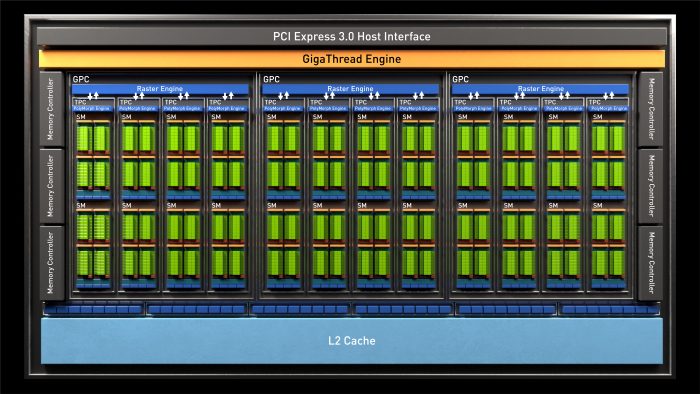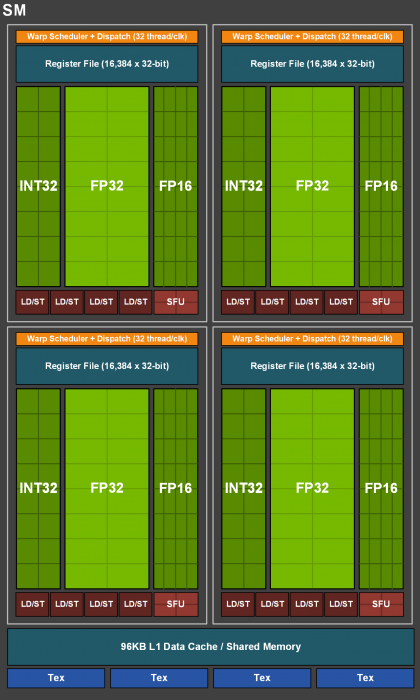TU-116 GPU Block Diagram

This is the TU116 GPU which powers the new GTX 1660 Ti Gaming X Card. This is a completely new GPU based on Turing Architecture but sans RTX features as we have seen on the 2XXX series cards. The TU116 has 24 SM’s which there are two per TPC.
New Streaming Multiprocessor (SM)

Here you can see the die layout of the new SM for the TU-116. It is a bit different as it now carries an FP16 Execution unit where the former Turing SM had Tensor cores.
Each SM is made up of
- 64 CUDA Cores
- 256KB register file
- 4 texture units
- 96KB of L1/shared memory
This is quite interesting as Turing supports concurrent FP and INT which will boost performance vs Pascal based rendering where the FP operations would have to wait for any non-FP math (INT) operations were in process. Also, note that with the FP16 you now have dedicated hardware that runs at double the rate of the FP32 ops. This will help in many newer games which have shown to have a mix of FP and INT based operations and with concurrent rendering, this can give a serious performance bump to these games by simply getting the OPs completed much more quickly.
It is worth noting that the TU116 and the GTX 1660 Ti Gaming X along with all other GTX 1660 Ti models will support the other known features that do not need a revisit here, such as:
- Variable Rate Shading
- Content Adaptive Shading
- Motion Adaptive Shading
- Unified Cache Architecture
- GDDR6 Memory
- Dedicated FP16 cores (discussed briefly above)
This GPU is taking direct target on existing GTX 1060 and even GTX 960 and lower gamers. Nvidia claims that over 2/3rds of the segment still are gaming on 960 or lower graphics, and the 1660 Ti Gaming X and all cards like it are designed to give these gamers a reason to step up their game. Now with that being said, Nvidia claims a 3X performance boost from 960 to 1660 Ti and that is a nice possibility especially at a potential sub $300 price point.
 Bjorn3D.com Bjorn3d.com – Satisfying Your Daily Tech Cravings Since 1996
Bjorn3D.com Bjorn3d.com – Satisfying Your Daily Tech Cravings Since 1996









Is this a paid advert?
Sure it’s good but notice not a single AMD card in your benchmarks, why?
It clearly obliterates an RX590 but pricing is an issue here, for me.
Taking the UK as an example, the MSI Ventus 1660ti is £260. The Vega56 Pulse from Sapphire is £280 and has been for a while so not down to the brief price-drop AMD did.
This card should be a direct replacement for the 1060 and therefore should be close to it in price, maybe £220-230.
Then it makes sense.
Hi Tim,
No, not a paid advertisement otherwise I would have listed it as so in both the title and the intro to the advertt.. we also would NOT mark it as a review at that point.
We have reached out to AMD on several occasions for review sample support on GPUs and have yet to recieve one in the past several years and with so many staff changes at AMD it has become more difficult to secure them (Reason we do not have a Radeon VII review)